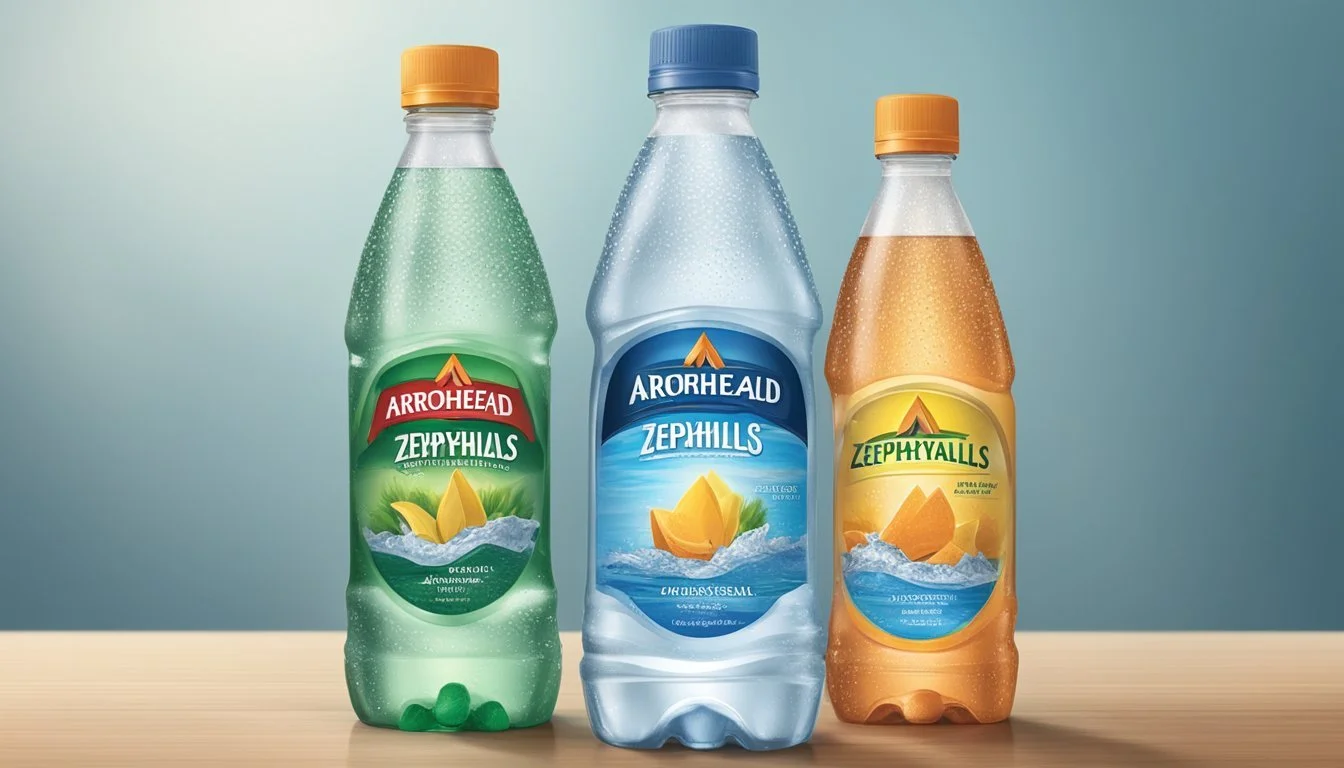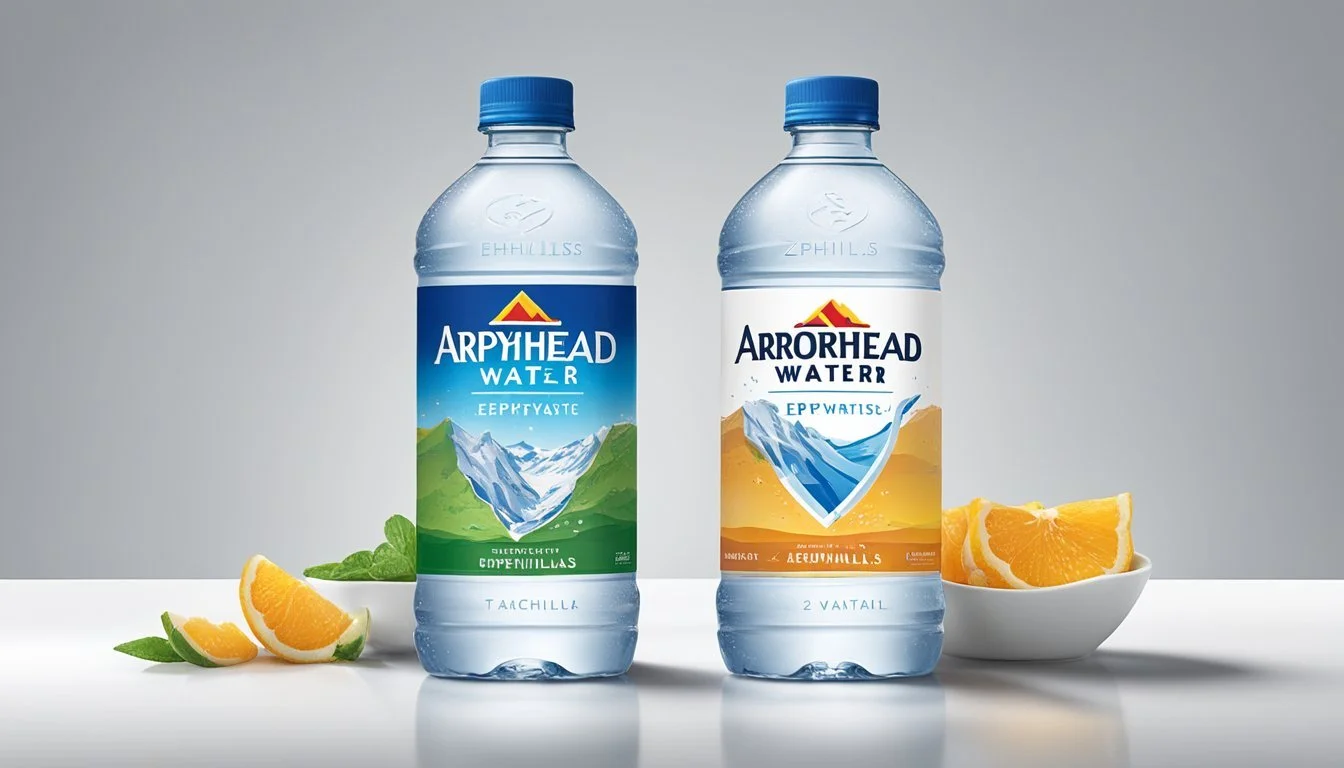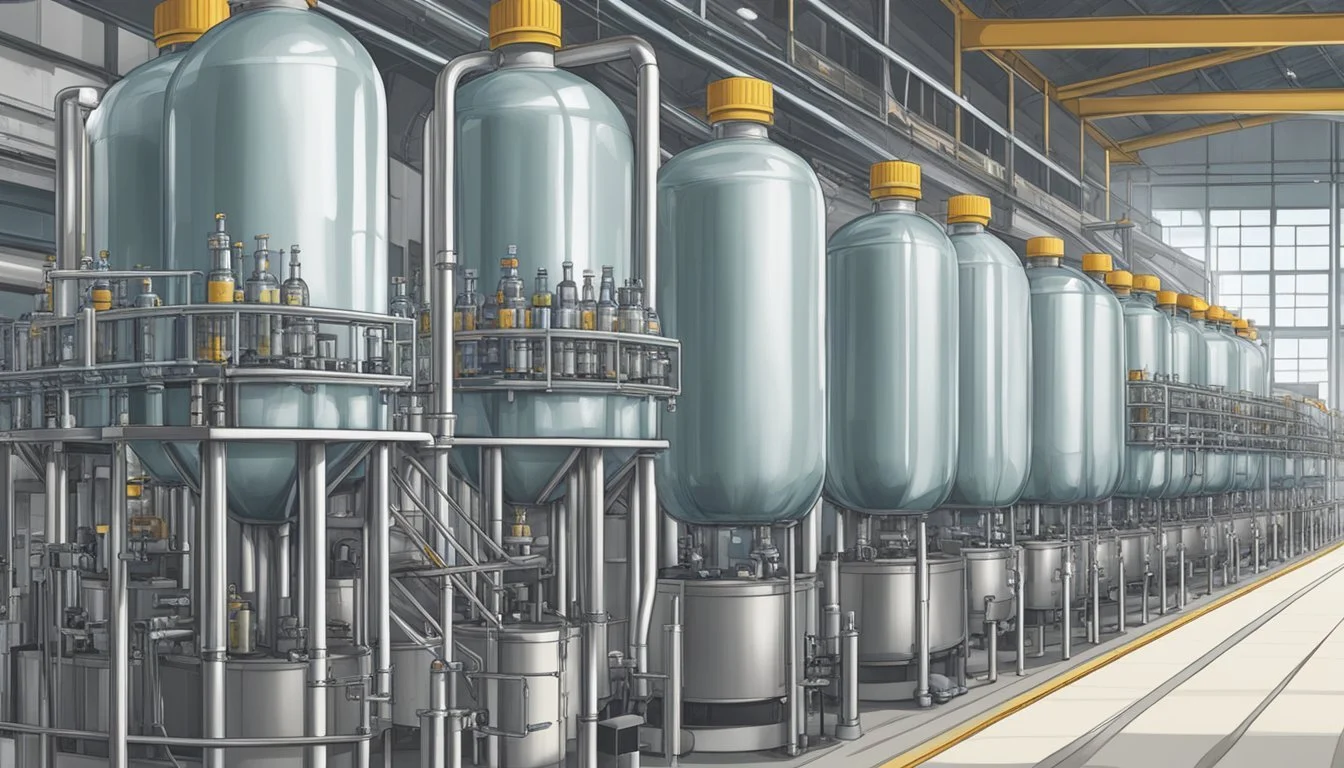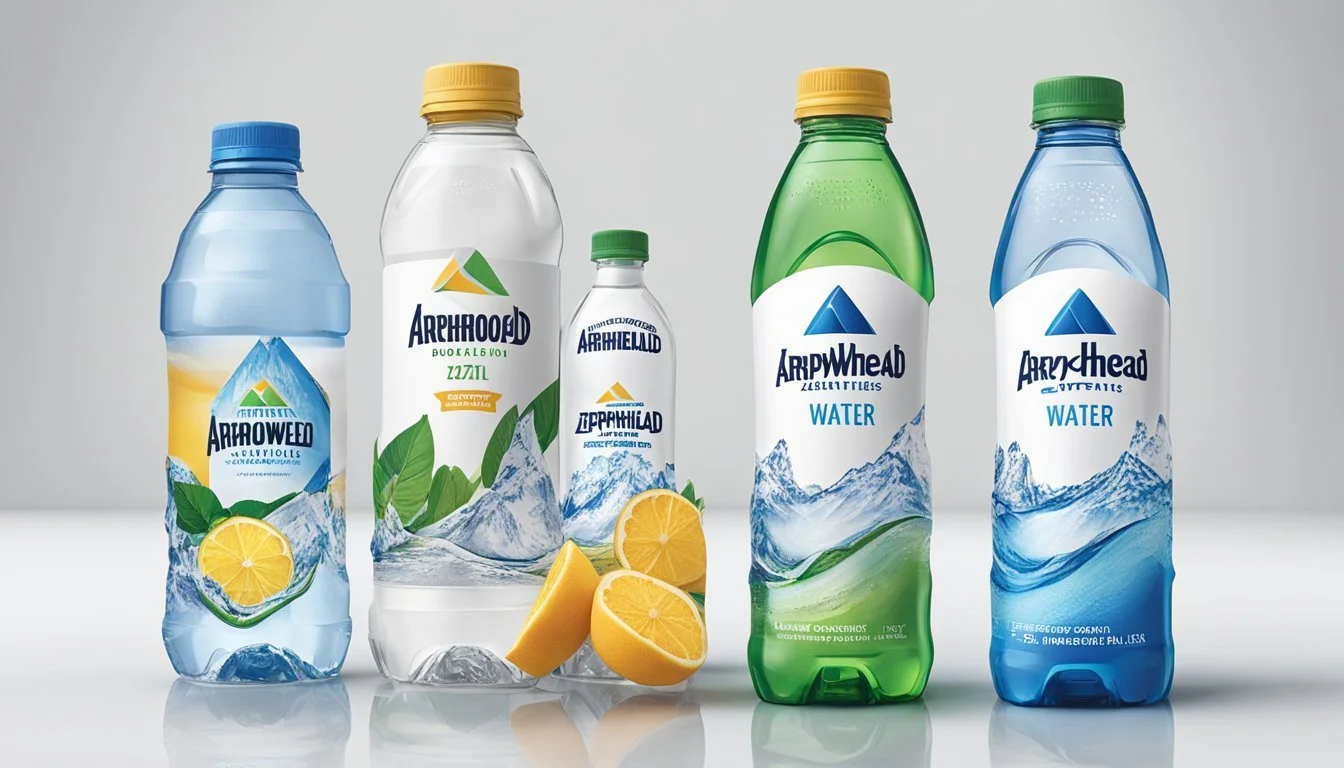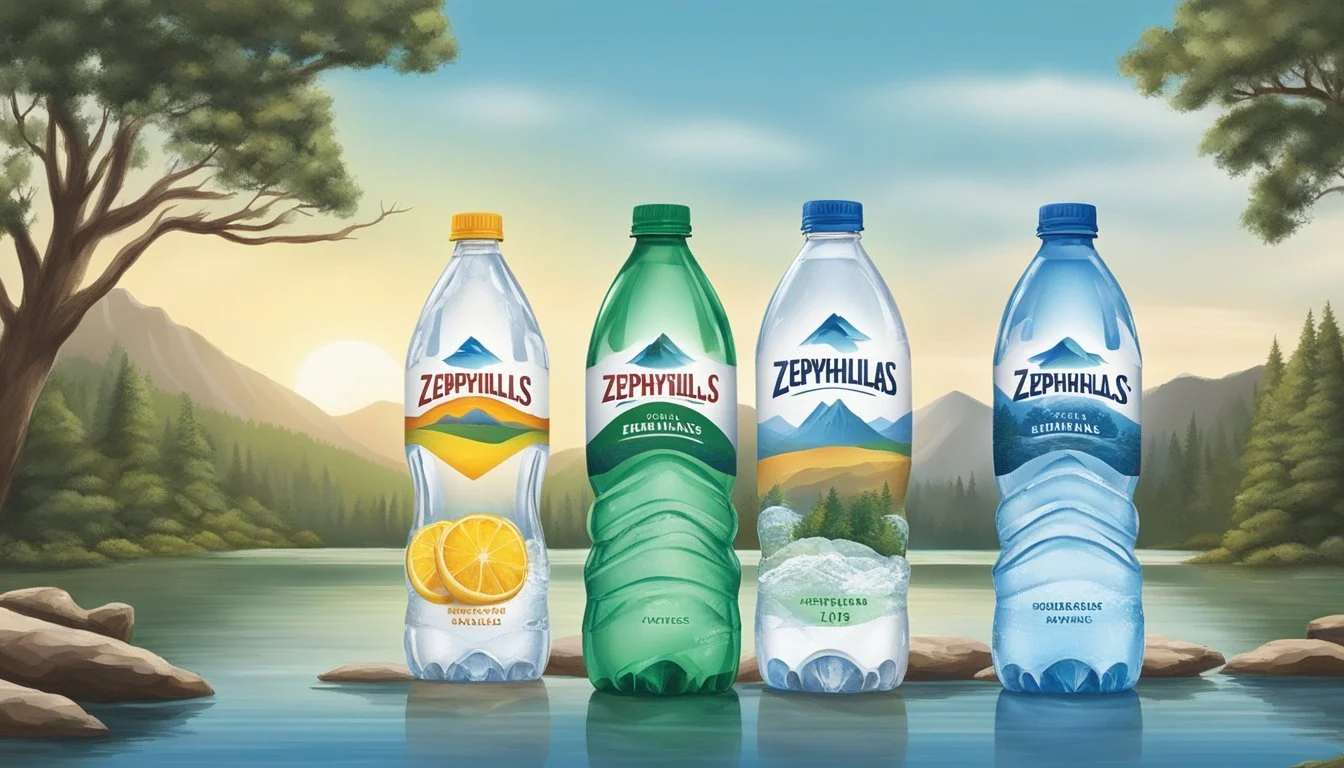Arrowhead vs. Zephyrhills
Comparative Analysis of Bottled Water Brands
With a multitude of bottled water brands on the market, consumers often find themselves weighing the differences in taste, quality, and sourcing of the water they buy. Two prominent brands that often come up in such discussions are Arrowhead and Zephyrhills. Both are established names in the bottled water industry, each with its own regional following and brand history. Arrowhead, sourced from mountain springs in the United States' western regions, is a brand that has been quenching the thirst of consumers for decades. Zephyrhills, meanwhile, draws its water from the crystal springs of Florida, boasting a taste that reflects its unique regional characteristics.
Each brand has carved out a niche in the bottled water market, appealing to customers through their distinct sources and supposed health benefits. The choice between Arrowhead and Zephyrhills is not just about preference in taste but also involves considerations such as the sustainability of sourcing, the presence of minerals, and the overall environmental impact of the bottling process. These factors play a significant role in the decision-making process for consumers who are mindful about the water they drink.
Therefore, when it comes to determining which bottled water is better, it involves a more intricate evaluation than one might initially assume. By examining Arrowhead and Zephyrhills on various fronts—including taste tests, source sustainability, environmental commitments, and consumer reviews—one can attempt to navigate this choice. This approach ensures a comprehensive understanding of what each brand has to offer, allowing consumers to make an informed decision based on their personal values and preferences.
Overview of Bottled Water Brands
Choosing the right bottled water is more than a matter of taste; it's a decision that can reflect one's values regarding purity, sourcing, and environmental impact. The market offers a diverse range of bottled waters, each with distinct qualities and production methods. Below is a closer look at some prominent brands.
Brand Profiles
Arrowhead: Sourced from multiple mountain springs located in western United States and Canada, Arrowhead is known for its accessibility and affordability. Despite being a widely distributed brand, the flavor profile is considered unremarkable.
Zephyrhills: A brand hailing from Florida's springs, Zephyrhills is often appreciated for its taste and natural composition. It emphasizes its local sourcing and connection to the Floridian environment.
Poland Spring: Originating from Maine, Poland Spring has a longstanding history. With a focus on sustainability, the brand claims to deliver crisp and refreshing water.
Evian: Emerging from the French Alps, Evian's natural filtration process is credited for its mineral-rich composition. The brand has a reputation for high quality and a unique balance of electrolytes.
Aquafina: This purified water undergoes a rigorous filtration process. A product of PepsiCo, Aquafina prides itself on delivering a pure and clean taste.
Deer Park: Known for sourcing their water from springs located in the eastern United States, Deer Park has a loyal following for its natural and fresh taste.
Fiji: With water extracted from an underground aquifer in the Fiji Islands, this brand is celebrated for its soft mouthfeel and the presence of natural silica.
Smartwater: Distilled for purity and enhanced with electrolytes, Smartwater is tailored for the hydration needs of health-conscious individuals.
Voss: Hailing from Norway, Voss water presents itself in iconic cylindrical bottles and is associated with premium quality.
Penta: Using a patented purification process, Penta boasts ultra-pure water that is free from additives and pollutants.
Icelandic Glacial: The water of Icelandic Glacial comes from the Icelandic Ölfus Spring. The remote location provides natural protection, and the water is praised for its clean taste.
Core Hydration: Marketed as perfectly balanced water to match the human body's natural pH, Core Hydration aims to deliver both taste and hydration efficiency.
Essentia: This brand offers ionized alkaline water. Essentia is known for its proprietary ionization process, resulting in a pH of 9.5 or higher.
Perrier: A French brand famous for its naturally carbonated mineral water, Perrier is recognized around the globe, well-regarded for its crisp taste and thirst-quenching bubbles.
Acqua Panna: Sourced from Tuscany, Italy, Acqua Panna is praised for its smoothness and natural alkalinity.
Crystal Geyser: Originating from various springs in the United States, Crystal Geyser is bottled at the source and has dedicated followers who favor its taste and the brand's commitment to sustainability.
Mountain Valley: Flowing from the Ouachita Mountains in Arkansas, Mountain Valley is sought after for its unique mineral composition and a history of serving natural spring water since 1871.
Nestlé Pure Life: Despite Nestlé Waters' position as one of the largest bottled water companies, its Pure Life brand has been described as average in taste but widely available and affordable.
These profiles indicate that when choosing a bottled water, consumers have a multitude of options, each with a different story, source, and composition, catering to a variety of preferences and needs.
Health and Safety of Bottled Water
When choosing bottled water, consumers should consider not only hydration but also the quality and safety of the product. Factors such as the presence of essential minerals for health, as well as potential contaminants, can significantly impact the safety and benefits of bottled water.
Hydration and Health Benefits
Bottled water like Arrowhead and Zephyrhills typically provide hydration, essential for sustaining bodily functions. Minerals and electrolytes that are naturally present or added to bottled water can contribute to nutritional intake and support a balanced hydration. The World Health Organization emphasizes the importance of drinking water that contains adequate amounts of essential minerals.
Contaminants and Safety Concerns
Contaminants in bottled water, such as heavy metals (lead, arsenic), chlorine, fluoride, plastic particles, and PFAS chemicals, can pose significant health risks. Regulatory agencies set safety limits for these substances to minimize potential health impacts.
Lead and Heavy Metals: Long-term exposure to high levels of lead and heavy metals can harm health.
Chlorine: Used to disinfect water but should be limited to avoid undesirable taste and health effects.
Fluoride: Added for dental health but must be kept within safe consumption levels.
Plastic Particles: Found in some bottled waters, raising concerns about their long-term health impact.
Arsenic: A naturally occurring element, arsenic at high concentrations can lead to health issues.
PFAS Chemicals: Known as "forever chemicals", PFAS are associated with various health problems and are not biodegradable.
Consumers are advised to refer to quality reports and opt for brands that adhere to stringent testing and safety standards.
Taste and Quality Comparison
When choosing between Arrowhead and Zephyrhills bottled water, consumers often consider the water source and composition along with the flavor profile. These factors are paramount to their preferences and perceptions of superiority in taste and quality.
Water Source and Composition
Arrowhead Mountain Spring Water is sourced from multiple springs in the western United States, including the mountains of California, Colorado, and Canada. The composition of this water is influenced by the minerals from the mountain rocks through which it flows, which can contribute to a unique mineral flavor.
Zephyrhills Natural Spring Water, meanwhile, is sourced from natural springs in Florida, specifically from the Crystal Springs Preserve. The water naturally filters through limestone which can enrich it with minerals and provide a distinct taste that many consumers find appealing.
Flavor Profile
The flavor profile of bottled water, a subjective yet critical aspect of consumer choice, is characterized by its water taste which can range from bland to rich mineral tones.
Arrowhead: Frequently described as having a neutral water taste with a hint of varying minerals depending on the specific source spring. Some consumers might find the mineral flavor understated, leading to a description of the water as "wholly uninspiring."
Zephyrhills: Known for a crisp and refreshing taste often associated with natural water from springs in a warm climate. The mineral content from the limestone aquifer adds a subtle character to the water that is generally well-received by consumers.
Environmental Impact
When discussing the environmental impact of bottled water brands like Arrowhead and Zephyrhills, one must consider the generation of plastic waste and the sustainability of the manufacturing practices.
Bottled Water and Plastic Waste
The production of bottled water inevitably leads to the creation of plastic bottles, a significant contributor to plastic waste globally. Arrowhead, being a bottled water brand, distributes its water in plastic containers, which if not properly recycled, can add to environmental pollution. Zephyrhills, similarly, packages its water in plastic bottles, though they have faced issues in their local environment with water management, affecting the natural resources in their region.
Boxed water alternatives and glass bottles are less common but provide options with potentially lower environmental impact due to higher recyclability and reduced plastic usage.
Sustainable Practices
Arrowhead has been involved in controversies related to the sourcing of its water, which raises questions about its commitment to sustainability. The brand extracts water from springs in the San Bernardino Mountains, leading to legal disputes and environmental concerns. In comparison:
Zephyrhills has taken steps to manage the impact of its water extraction on the local environment by engaging with Florida's water management authorities. However, limiting new developments in the region to prioritize water resources signifies the challenges water companies face in balancing business practices with environmental stewardship.
Both brands operate under larger corporate entities that have pledged to improve their environmental footprint, yet the implementation and effectiveness of these pledges are critical in evaluating their sustainable practices.
Water Purification Processes
In the fierce competition between bottled water brands, purification processes play a vital role in determining the quality of the final product. Arrowhead and Zephyrhills each utilize distinct methods to ensure the purity and taste of their water meet consumer expectations.
Filtration and Purification Techniques
Arrowhead primarily sources its water from mountain springs in the western U.S. and Canada, after which it undergoes multiple stages of filtration. While the specifics of Arrowhead’s filtration process are not publicly detailed, it commonly includes methods such as filtration, ozonation, and exposure to ultraviolet light to eradicate any impurities and microorganisms, achieving a high level of sanitation without affecting the mineral content or pH.
Zephyrhills sources its water from Florida springs and emphasizes natural purity. Its filtration process typically includes reverse osmosis and filtration through layers of sand and gravel to remove particles and impurities. The brand may also employ ozone for disinfection purposes, which effectively destroys bacteria and viruses without leaving harmful residues.
pH levels: Both brands maintain pH levels that aim to match natural water, with the ideal being close to a neutral pH of 7. However, the materials and substances encountered during the filtration process might slightly alter the final pH balance.
Reverse osmosis: A critical step in Zephyrhills' process, this technique is revered for its ability to remove even the smallest contaminant particles, resulting in exceptionally pure water.
Alkaline: Neither brand heavily markets their water as alkaline; however, the natural sources may have varying levels of alkalinity, contributing subtle taste differences.
Hydro-7: This proprietary process, cited in relation to Aquafina, another bottled water brand, is an example of a specialized purification process that aims to enhance taste and purity.
Both Arrowhead and Zephyrhills use ozone treatment in their purification efforts. Ozone, a powerful oxidant, is effective at disinfection and also assists in the removal of any offending tastes or odors the water may have acquired.
Additionally, the use of ultraviolet light in water purification, a step that Arrowhead may use, serves as a non-chemical disinfection method which deactivates bacteria and viruses, ensuring the bottled water is safe for consumption.
By understanding the purification processes of Arrowhead and Zephyrhills, consumers can make more informed choices about the bottled water they drink. Each brand's multi-barrier approach to water purification seeks to deliver not only clean and safe water but also water that tastes good and retains healthy mineral content.
Consumer Perspectives
When examining Arrowhead and Zephyrhills, consumer perspectives are shaped by market trends, individual preferences, and social media dialogue. These insights offer a glimpse into the prevailing affinities towards these two bottled water brands.
Market Trends and Preferences
Consumers often make their bottled water choices based on taste, source credibility, and brand reputation. Arrowhead, sourced from mountain springs in the western U.S. and Canada, might resonate with those who prefer the crisp taste often associated with spring water. However, it has been described as unremarkable in flavor by some. On the other hand, Zephyrhills is known for its natural spring water from Florida and tends to be well-regarded in taste tests. Popular brands often influence market trends, and Zephyrhills, being a familiar name in the southeastern U.S., has a loyal regional consumer base.
Arrowhead: Perceived as a more cost-effective option with an adequate taste.
Zephyrhills: Held in higher regard for taste but may be less accessible outside its regional market.
Social Media and Brand Perceptions
Social media platforms like Twitter provide a real-time snapshot of consumer opinions and are significant in shaping the reputation of bottled water brands. Users have shared mixed reviews about Arrowhead, sometimes questioning its source and production quality. Zephyrhills receives more favorable mentions, especially within its main market, as users often highlight the brand's taste and source authenticity. Neither brand is immune to environmental criticisms often directed at bottled waters in the journal articles and online discussions. However, consumers do express brand allegiance where environmental practices are perceived as responsible or when a brand's charitable efforts are well-publicized.
Arrowhead: Mixed reactions; some negative comments pertaining to taste and sourcing.
Zephyrhills: Generally positive feedback focused on taste and natural sourcing, with regional affinity playing a significant role.
Packaging and Accessibility
In the context of bottled water, the materials used for packaging and the breadth of their distribution networks greatly influence consumer choice and environmental impact.
Bottle Materials and Designs
Arrowhead and Zephyrhills both predominantly use plastic bottles for their water. These bottles are generally made to be lightweight and durable. Arrowhead’s plastic bottles are designed to be recyclable and claim to use 50% recycled plastic in their Eco-Shape® bottles. Zephyrhills also uses plastic bottles that are 100% recyclable, and they have introduced bottles made with 30% plant-based materials. Both brands do not offer glass bottles as a standard option, focusing instead on the convenience of plastic.
Arrowhead: Eco-Shape® Plastic bottles, 50% recycled material, recyclable
Zephyrhills: Plastic bottles, up to 30% plant-based materials, 100% recyclable
BPA-Free status is a significant factor for health-conscious consumers. Both brands' plastic bottles are BPA-free, aligning with industry standards for food and beverage safety.
Availability and Distribution Channels
Arrowhead’s distribution primarily spans the western United States, while Zephyrhills has a strong presence in Florida and the southern U.S. Their water products are available in various retail locations, from convenience stores to supermarkets.
Arrowhead:
Strong presence in the western U.S.
Distributed in various retail locations
Zephyrhills:
Mainly available in Florida and the southern U.S.
Wide distribution in a range of retail outlets
Both brands are also accessible through online channels, offering bulk purchasing options and home delivery services. This accessibility meets the needs of different consumers, whether they seek individual bottles or larger quantities delivered directly to their homes.
Regulatory and Industry Standards
In the comparison of Arrowhead and Zephyrhills bottled waters, it is crucial to consider the regulatory and industry standards that govern the quality of bottled drinking water. These standards ensure that bottled water is safe for consumption and meets specific quality benchmarks that are set by authoritative entities.
Quality Assurance
Both Arrowhead and Zephyrhills adhere to regulatory standards set forth by the Food and Drug Administration (FDA), which mandate bottled water to be as safe as tap water. The FDA regulations encompass quality standards for contaminants, labeling requirements, and Good Manufacturing Practices (GMPs). Additionally, each brand must comply with state regulations and industry benchmarks that often surpass federal requirements.
The International Bottled Water Association (IBWA) enforces additional voluntary standards that its members, including both Arrowhead and Zephyrhills, must meet. These standards include annual unannounced inspections, which add a layer of quality assurance beyond governmental oversight.
The World Health Organization (WHO) also provides guidelines for the quality of drinking water. However, while WHO guidelines are internationally recognized, compliance is voluntary and not enforced as a regulatory standard within the United States.
Bottled water brands must regularly test for contaminants and quality indicators, which include:
Microbiological purity
Trace chemical substances
Radiological elements
Organoleptic properties (e.g., taste, color, odor)
Arrowhead and Zephyrhills both assert their commitment to quality by marketing their compliance with these standards and often conducting their own internal quality assurance procedures to maintain consumer confidence in their products.
Comparative Pricing
When comparing the pricing of Arrowhead and Zephyrhills bottled water, consumers will notice that prices can vary greatly depending on location, the volume of purchase, and retailer markup. However, a general trend in their pricing structure can be observed.
Arrowhead Mountain Spring Water:
Single Bottles: Typically range from $1.00 to $2.50 for standard 16.9-ounce bottles
Bulk Purchase: A 24-pack of 16.9-ounce bottles often costs between $3.00 and $6.00
Zephyrhills Natural Spring Water:
Single Bottles: Usually sell for about $1.00 to $2.50 for similarly sized 16.9-ounce bottles
Bulk Purchase: For a 24-pack of 16.9-ounce bottles, the price commonly ranges from $4.00 to $7.00
For a direct comparison, consider looking at larger bulk purchases where the price per unit drops:
Quantity Arrowhead (per bottle) Zephyrhills (per bottle) 24-pack, 16.9 oz $0.12 - $0.25 $0.16 - $0.29
Both brands offer competitive pricing, but Arrowhead may have a slight edge in affordability when bought in bulk, particularly in regions where it's sourced and distributed. Prices also tend to be seasonally influenced and subject to promotions. Retailers like supermarkets or warehouse stores might offer discounts to members or during sale events.
It's important for consumers to shop around and check for updated pricing, as water bottle prices can be subject to change based on economic conditions, distribution costs, and specific store pricing strategies.
Conclusions
When comparing Arrowhead and Zephyrhills bottled waters, several factors should be considered, such as source, taste, and purity.
Arrowhead Mountain Spring Water:
Sources: Mountain springs in the western U.S. and Canada.
Taste: Often described as uninspiring.
Purity Concerns: Contains various contaminants that may pose health risks, including arsenic, nitrates, and bacteria (e.g., coliform, E. coli).
Zephyrhills Natural Spring Water:
Sources: Springs in Florida, renowned for its natural filtration system.
Taste: Known for its crispness and clean finish.
Purity Concerns: Generally meets EPA standards for contaminants, making it a safe choice for consumption.
Criteria Arrowhead Zephyrhills Source Mountain Springs Florida Springs Taste Average Crisp and clean Purity Potential Health Risks Meets EPA standards
In terms of availability, both brands are widely distributed, with Arrowhead being prevalent in the western states and Zephyrhills primarily available in Florida and the eastern states.
While tastes may vary, Zephyrhills tends to stand out for its quality and safety measures. Consumers often prefer its flavor and trust its sourcing. Conversely, Arrowhead's reports of contaminants may concern some consumers, impacting their overall preference between these two brands.
It is suggested that consumers make an informed decision based on these considerations and opt for the brand that best aligns with their priorities regarding taste, source, and purity.


